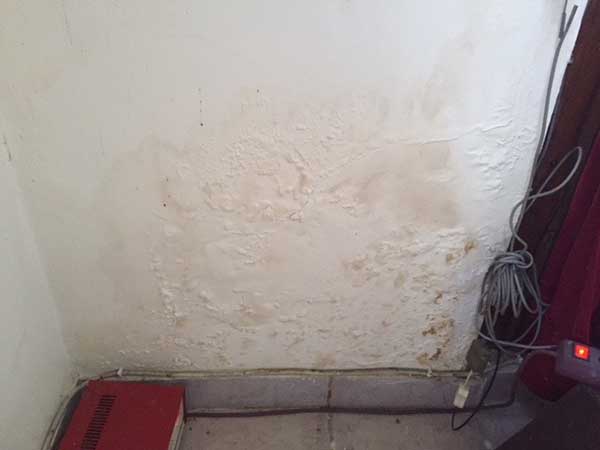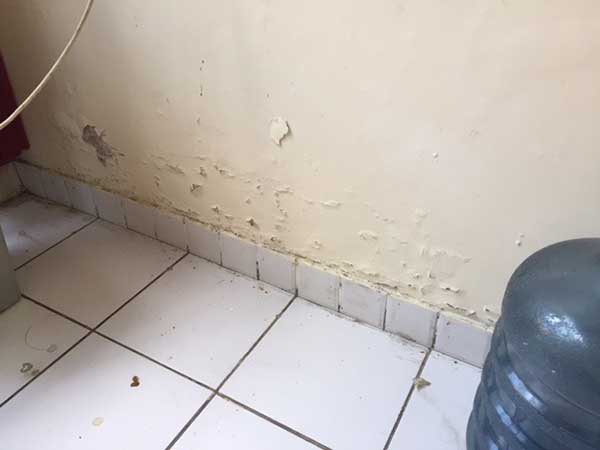Rising Damp in Walls
Prevention and Repair of Rising Damp
Water rising up inside walls is known as Rising Damp. It is a very common problem in walls in many parts of the world especially Bali and throughout Indonesi. It can result in damp air throughout a building the high humidity causing mildew and making clothes in wardrobes musty and covered in mould. Rising Damp is not difficult to repair but it does require tradesmen who know how to tackle the problem. What causes rising damp, how do we recognise it and how do we repair it? We also look at methods that do not work.
Rising damp is an exasperating but very common problem particularly in damper climes such as monsoon areas of the world, even the most expensive houses suffer from this perennial problem which can make a luxurious home into an unpleasant place to live.
It can be tricky to get rid of but, using the correct materials and an engineered technique, rising damp can be very effectively eliminated and prevented. It is highly effective and not expensive. The solution is to prevent water rising up the wall and to do this we install a water barrier through the bottom of the wall.
See also:

What is Rising Damp?
House walls are usually built from red brick or concrete blocks, both are materials that are like sponge and water from the ground below can soak up through the wall with what is known as capillary action reaching a height of up to a metre above ground level. The lower portion of the wall is constantly damp, paint peels off and fungus may grow on the wall. It can be very unpleasant and can cause the following problems:
- Unsightly appearance with paint peeling and patches of black mildew on the wall.
- Rooms, cupboards and wardrobes are damp so that clothing and shoes can grow mould and mildew.
- The house may be constantly musty.
- It can cause health problems from the mould spores in the air.
Rising damp is moisture usually in the lower parts of walls (less than 3 feet up the wall unless the wall is tiled in which case it may be higher).
How is it caused?
Rising Damp is caused by surface tension and capillary action of water inside the wall. It is all to do with the apparent skin on the surface of water known as surface tension.
We all know that if you put water in a glass with dry sides the edge of the water curves down where it meets the glass, in a wet glass the edges curve up, this is known as a meniscus. In a confined space such as a hole or a crack the surface tension pulls the water through. This is, of course, known as capillary action and is what makes a wick work..
We all know that if you put water in a glass with dry sides the edge of the water curves down where it meets the glass, in a wet glass the edge curves up, it's a meniscus sort of thing. In a confined space such as a hole or a crack the surface tension pulls the water through. This is, of course, known as capilliary action and is what makes a wick work as in “this bloke going on and on about rising damp is really getting up my wick.”
In a wall that is permeable, such as one made of brick or light concrete blocks, capilliary action allows water to soak up the wall like a sponge. It will rise as high as a metre above ground level.
How do we prevent it?
When any building is built in a Western country a waterproof layer known as a "damp proof course" is built through the bottom of all ground floor walls. Back in Victorian times the first damp proof courses were a thin layer of impervious rock such as slate, as time passed slate was replaced firstly by roofing felt and later by plastics. This layer prevents water from soaking up inside the walls.
How do I know if I have a problem?
Look along the lower part of your walls. Usually in the lower 30 cms you will find blistering paintwork or damp patches. The blisters often peel off leaving concrete or a white chalky plaster showing. Depending on how serious the problem is you may find damaged paintwork up to a metre up the wall.
Damage may be particularly evident if the ground or floor level is higher on one side of the wall than the other.
Note that in some countries walls are generally concrete with a very thin skim of chalky white “plaster”. Do not be mislead this may not be plaster as European people would expect, it is only a very thin skim on a very hard concrete render.
How do we repair rising damp in an existing building?
We Install a damp proof course or an impermeable membrane

The standard way of preventing rising damp was commonly used by the Victorians. More than a hundred years ago houses were built with a thin layer of impermeable slate right through the wall about two or three inches (those were those strange measurements the Victorians used) above the ground. Known as a damp proof course it was very effective and is standard building practice to this day although instead of slate a broad bituminous or plastic tape is usually used.
Unfortunately in many parts of the world damp proof courses are not built into house walls and hence there is a common problem with rising damp which is evident in many, many houses.
An effective solution for installing a damp proof course in an existing wall involves cutting a slot through the wall and inserting an impermeable tape. Shims and wedges are needed to support the wall until it is grouted up. Unfortunately this system is not currently available in many countries.
Probably the best method to use is to install a waterproof barrier.
The bottom few centimetres of the wall are replaced using high strength concrete with waterproofing additives. This band must cover the full length and width of the wall to provide an impermeable band just above the floor. If the ground or a concrete floor are higher on one side of the wall the sloof must be continued between the ground and the wall to ensure a continuous barrier.
It sounds drastic but is surprisingly painless and not expensive - unless you have marble wall tiles of course. A sloof follows the sound logic the Victorians used.
As a final comment if you are building a new house and you specify a damp proof course don't expect one to be installed. Even if the builder did know what you are talking about suitable materials are unlikely to be available. The best bet is to specify an effective waterproof membrane at the building stage and check to make sure it is installed.
Rising damp can be beaten.
What you do NOT do.
Rising damp is a common problem in the UK and other damp climates across the world. In many of these countries there are thriving industries providing “solutions” for rising damp. “Solution” is rather an abused word and it is amazing the number of snake oil salesmen who are drilling, wiring, squirting and coating their way through peoples houses, often at large expense and with a remarkably high level of failure.
The most common solution people use in Bali is to waterproof render the wall up to a height of a metre on both sides.
Wrong.
Waterproofing the surfaces of a wall does not work
A wall has to breathe if it is to dry out. The waterproof coating does not stop the water rising inside the wall but it does stop it getting out. A good friend of mine waterproofed his walls to a height of a metre and the result was that the damp rose even higher and he now has damp patches as high as one and a half metres up his walls.
Tiling walls does not solve the problem
In Indonesia many people tile the lower part of their walls to solve the problem. This does not work for the same reason as water proofing the wall (above). It is, in fact, far cheaper but far more effective to carry out the correct repair work
Injecting silicone usually fails
Another common “solution” involves the injection of silicone or other waterproofing substances into holes drilled in the wall. Sometimes these methods succeed but usually they fail because there is not a continuous barrier along the wall. These methods often also include injecting expanded polymers into the wall cavity – also not a good idea because it stops the air circulation inside the wall cavity. This is not relevant to us because to date I have not yet come across a cavity wall in Bali apart from house walls that back onto someone else's house in which case the cavity is usually disastrously filled with builders rubble, also not a good idea.
Electric currents in copper wires doesn't work
Another marketed “solution” involves installing a copper or titanium wire along the bottom of the wall and applying an electric current. A trial of this technique was carried out recently in Bali. Guess what – it failed.
Find Good Tradesmen
Rising damp in walls can be prevented and repaired but it is important to find people who know what they are doing, it is a good idea to check people out properly before you let them start cutting into your walls.
See also:
Phil Wilson
Copyright © Phil Wilson June 2008
This article, or any part of it, cannot be copied or reproduced without permission from the copyright owner.
